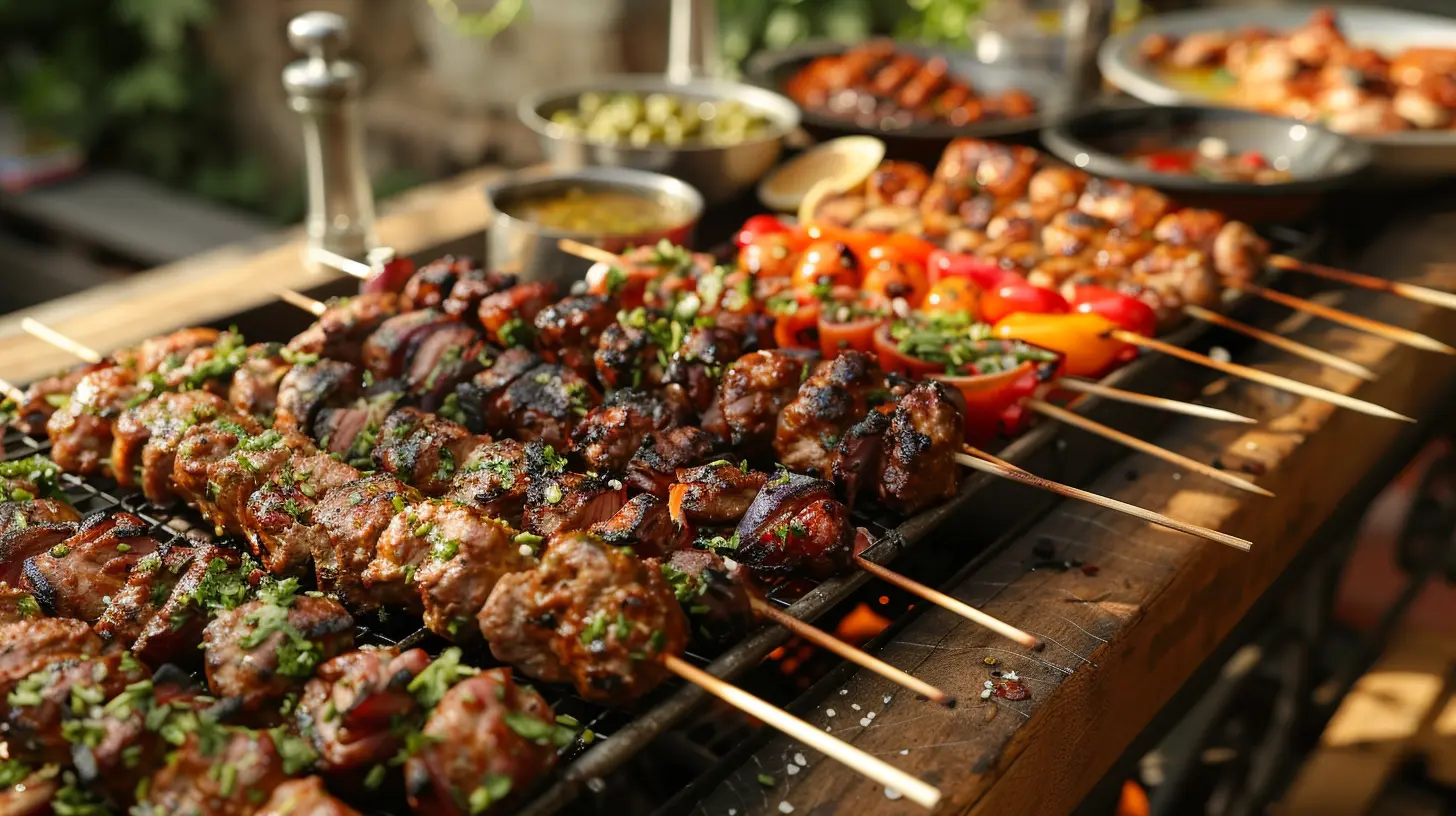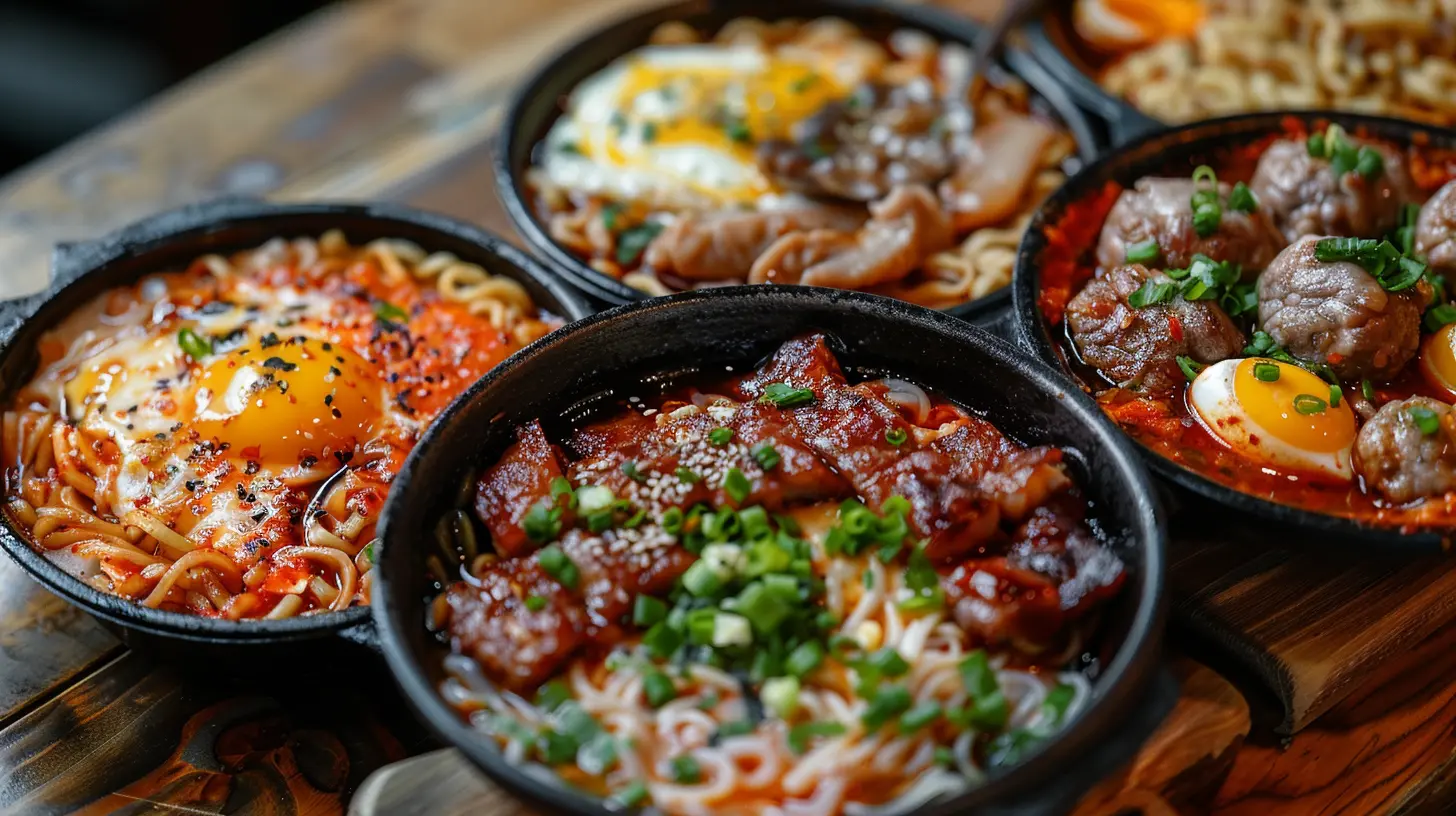Street Food Survival Guide for First-Time Foodie Travelers
3 November 2025
There’s no better way to experience a new culture than by tasting it—literally. Street food brings you right into the heart (and stomach!) of a city’s soul. It's fast, it's flavorful, it’s full of character. But let’s be honest—diving face-first into unfamiliar bites in a foreign land for the first time? That can be a little intimidating. Is it safe? Is it spicy? What even is that?
If your idea of travel includes devouring spicy skewers in Bangkok or munching on a soft taco from a cart in Mexico City, you’re in the right place. This Street Food Survival Guide for First-Time Foodie Travelers will help you navigate your way through bustling night markets, smoky roadside stalls, and hidden back-alley gems with confidence and curiosity—without upsetting your stomach (or ego).

1. Why Street Food Should Be on Every Foodie Traveler’s Checklist
Before we get into the nitty-gritty, let’s talk about why street food is more than just a cheap meal.It’s the Real Deal
Forget the fancy tablecloths and triple-marked-up menus. Street food is where the locals eat, and that's where the real recipes live. Passed down from generations, these dishes are often cooked the old-school way, with a touch of love and a lot of experience.It’s Budget-Friendly
Trying to stretch your dollars (or euros or baht) while still eating like royalty? Street food is your golden ticket. You can feast like a king for the price of a fancy coffee back home.It’s an Adventure
Sure, it can be unpredictable. But that's the fun of it. Trying something new—whether it’s sizzling dumplings or sweet sticky rice—is like unwrapping a flavorful present every time.
2. Street Food Safety 101: How Not to Get Sick
Okay, let’s tackle the elephant in the room. We’ve all heard the horror stories—“I took one bite and spent the next 3 days with my face in a toilet.” Yikes. But here’s the thing: you can eat street food safely. It’s all about choosing wisely.Trust the Crowd
See a long line of locals waiting patiently? That’s a good sign. Busy stalls mean high turnover, which means the food is fresh. If it’s good enough for the locals, chances are it won’t land you in travel purgatory.Watch it Cook
If you can see your food being grilled, fried, or steamed right in front of your eyes, you’re golden. Avoid pre-cooked items sitting around at room temperature—those are bacteria playgrounds.Avoid Mystery Meats (At First)
Unless you’re an adventurous carnivore with a stomach of steel, stick to what you recognize for now. Chicken, beef, fish? Cool. Shady-looking organ meats? Maybe not on day one.Carry Your Own Napkins and Sanitizer
Let’s just say street food vendors are more focused on flavor than hygiene. Wipe your hands, clean your mouth, and stay prepared.
3. Navigating the Menu (Even When There Isn’t One)
Don’t Be Afraid to Point
Lots of places won’t have English signage or menus. No problem. Just smile and point at what looks good. Follow someone else's lead, or gesture to your neighbor’s plate with that universal look of “I want that.”Learn a Few Food Phrases
Even just knowing how to say “not spicy” or “chicken please” in the local language can save your tastebuds. Bonus: locals will appreciate the effort and might even throw in an extra skewer for you.Use Your Senses
Smell it. Watch it cook. Listen to the crackle on the grill. Let your senses guide you. If something smells amazing and people are swarming like bees to honey, it’s probably worth a try.
4. What to Try (And What to Skip)
Every region has its own street food superstars, but here’s a general guide for what to look out for—and what might be better saved for your next trip (when your stomach’s trained for it).Street Food Staples Worth Trying
- Tacos al pastor in Mexico: juicy, spicy pork slow-roasted on a spit.- Banh mi in Vietnam: the perfect fusion of French bread and Vietnamese flavors.
- Panipuri in India: spicy, crunchy, tangy water bombs (super addictive).
- Satay in Indonesia: grilled meat on skewers with a sweet peanut sauce.
- Gyros in Greece: heaven wrapped in pita with creamy tzatziki.
Street Foods to Be Cautious With
- Fresh salads or raw vegetables: often washed in local water. Not always a safe bet.- Raw seafood: unless you’re in Japan or a place known for sushi, maybe skip it.
- Uncovered desserts swarming with flies: nope.
- Milky drinks or ice in beverages: could be made with unfiltered water.
5. Street Food Etiquette: Don’t Be “That” Tourist
You’re stepping into someone’s daily routine. Be cool about it.- Don’t haggle over prices at food carts. It’s not a flea market.
- Clean up after yourself if there's a place to sit and eat.
- Show respect when photographing food or vendors. A smile and a nod go a long way.
6. Tools of the Trade: What to Pack
Street food is spontaneous, but you can still be prepared.Must-Haves for Foodie Travelers:
- Hand sanitizer or antibacterial wipes- Collapsible utensils or chopsticks
- A refillable water bottle (with a filter, if possible)
- Travel probiotics to help your gut adjust
- Disposable tissues or napkins
- A food diary app to track your favorites and avoid regrets
Pro tip: Pack activated charcoal tablets. They can help with minor stomach upsets and are a lifesaver on a food trip.
7. The Power of the Local Food Tour
Still nervous? Sign up for a local street food tour. You’ll get to sample the best of the best, ask questions, and pick up tips from a knowledgeable guide. It’s like training wheels for your tastebuds.Plus, you’ll get the inside scoop. Which cart has the best dumplings? Which alley secretly serves the best curry? These are things you can't Google—locals know best.
8. Follow the Flavor: Knowing What’s In Season
Street food is seasonal, especially in markets that rely on local ingredients. Sweet mangoes in Thailand? Only if you’re there at the right time of year. Fresh corn tamales in Mexico? Same deal.If you’re not sure, ask. Vendors love sharing what’s fresh and in-season—they take pride in it.
9. Embrace the Adventure (and the Occasional Miss)
Not every dish will be a home run. Some may be too spicy, too sweet, or just plain weird (looking at you, fermented tofu). And that’s okay. Street food is meant to surprise you—sometimes in the best way, sometimes in a “what did I just eat?” way.Roll with it. Laugh it off. And chalk it up to experience.
10. Take the Memories (Not the Stomach Bug)
Last but not least—snap those pics, write down your favorites, and bring your taste adventures home. Try recreating dishes in your own kitchen, or just use them as conversation starters. “Did I ever tell you about the time I tried grilled scorpion on a stick?”Street food is more than food. It’s a memory waiting to be made.
Final Bite: You’ve Got This
Street food isn’t just a meal—it’s a story, a leap of faith, a passport to the soul of a culture. Don’t let fear keep you from those smoky skewers or bubbling curries. Go with curiosity, a bit of caution, and a big appetite.And remember—every seasoned street food lover started exactly where you are: staring at a sizzling cart, wondering if their stomach would survive. Spoiler alert: it usually does. And it often comes back for seconds.
Bon appétit, foodie traveler. The streets are calling.
all images in this post were generated using AI tools
Category:
Street FoodAuthor:

Reed McFadden
Discussion
rate this article
1 comments
Zia Stevens
This guide is a wonderful resource for anyone eager to dive into the vibrant world of street food! Your tips capture the essence of culinary adventure. As a first-time foodie traveler, I’m excited to embrace new flavors and experiences. Thank you for inspiring us to savor every bite!
November 4, 2025 at 4:19 AM


